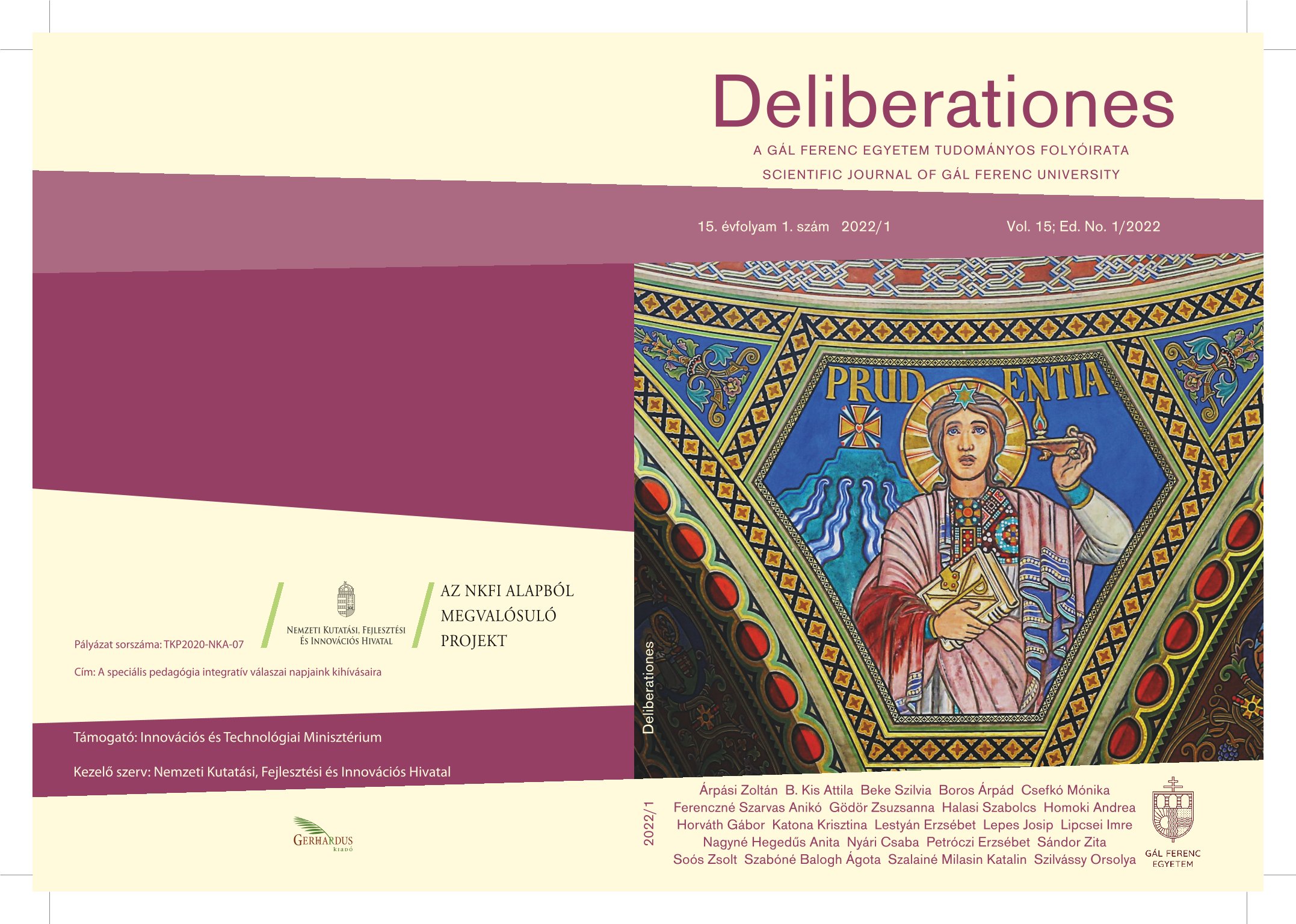Abstract
The Hungarian public education actors are still not familiar with special methods to support the foreign language learning of students with special educational needs, so, our training program aims to reduce this gap.
In general, for language learning to be successful, it is necessary to alleviate the associated barriers in the students concerned and to compensate for the difficulties resulting from cognitive impairments. The teacher should first and foremost create an accepting and supportive atmosphere, using a variety of learning techniques and strategies best suited to the individual profile.
As for the methods, our program emphasizes a holistic approach, visual reinforcement, multi-sensory practice and differentiated teaching in general. More attention is devoted to the problem area of dyslexia and dysgraphia, as these are the most common specific learning disabilities that language teachers may encounter, but also to the integrated teaching of foreign languages to hearing impaired learners. Since the role of visuality in compensating for several types of disability is prominent, the pedagogical use of picture books in foreign language pedagogy is also addressed.
The program has the specific aim of broadening the methodological culture of the trainees, particularly in the field of cooperative learning, which is a key factor in maintaining motivation to learn among students with special pedagogical needs as well.
References
Alt, K. (2017). Mit Kindern Bilderbuchwelten vielfältig entdecken, Beltz Verlag, Weinheim, Basel.
APA (American Psychiatric Association) (2013). Diagnostic and Statistical Manual of Mental Disorders. Fifth Edition (DSM–5). Washington.
Berninger, V. (1996). Reading and Writing Acquisition. A developmental neuropsychological perspective. Westview Press, a Division of Harper Collins Publishers.
Colorado–Oxford.
Csépe, V. (2001). Diszlexia a kutatásban és a gyakorlatban. – Quo vadis Európa? Gyógypedagógiai Szemle, 1. 44–52.
Csizér, K., Kontráné Hegybíró, E., & Piniel, K. (2015). Hallássérült fiatalok idegennyelv-tanulása Magyarországon. Budapest. Tinta Könyvkiadó.
Deákiné Bajkó Ágnes – Gergely Eszter: Idegen nyelvek a hallássérültek nevelésében-oktatásában in: Csizér, K., Kontráné Hegybíró, E., & Piniel, K. (2015). Hallássérült fiatalok idegennyelv-tanulása Magyarországon. Budapest. Tinta Könyvkiadó.
Dörnyei, Z. (2005). The psychology of language learner. Lawrence Erlbaum Associates, Mahwah, N. J., London.
Ganschow, L., Sparks, R. (2000). Reflections on foreign language study for students with language learning problems: Research, issues and challenges. Dyslexia, 6. 87–100.
Gósy, M. (1994). A beszédészlelés és a beszédmegértés fejlesztése (szóban, írásban) iskolásoknak. Budapest. Nikol.
Gyarmathy, É. (1998). A tanulási zavarok azonosítása és kezelése az óvodában és az iskolában. Új Pedagógiai Szemle, 11. 68–76.
Gyartmathy, É., Vassné Kovács, E. (2004). Dyslexia in Hungary: A guide to practice and resources. In I. Smythe – J. Everatt – R. Salter (szerk.): International book of dyslexia. A cross language comparison and practice guide. Reading: British Dyslexia Association, Reading 116–121. https://dokumen.tips/documents/the-international-book-of-dyslexia-a-guide-to-practice-and-resources.html?page=127
Helland, T., Kaasa, R. (2005). Dyslexia in English as a second language. Dyslexia, 11. 41–60.
International Dyslexia Association (2012). Definition Consensus Project. https://dyslexiaida.org/definition-consensus-project/
Kontráné Hegybíró E., Kormos, J. (2007). Nyelvtanárok a diszlexiáról. Új Pedagógiai Szemle 57/9. 82-91.
Kurwinkel, T. (2017). Bilderbuchanalyse. Narrativik - Ästhetik – Didaktik, A. Francke Verlag Tübingen.
Kümmerling-Meibauer, B. (2016). Képeskönyvekből tanulni. A korai literáció, az első könyvek és a gyermek nyelvi fejlődésének összefüggéseiről, in: Szilvássy Orsolya (szerk.): Nyelvpedagógia és gyermekirodalom. (Diskurzus 17.) Gál Ferenc Főiskola Pedagógiai Kar, Szarvas, 132-143.
Meixner, I. (1993). A diszlexia prevenció, reedukáció módszere. Bárczi Gusztáv Gyógypedagógiai Főiskola, Budapest.
Mesterházi, Zs. (1998). A nehezen tanuló gyermekek iskolai nevelése. Budapest. Eötvös Loránd Tudományegyetem Bárczi Gusztáv Gyógypedagógiai Főiskolai Kar.
Nijakowska, J. (2000). Dyslexia – Does it mean anything for the foreign language teacher? In L. Peer & G. Reid (Eds), Multilingualism, literacy and dyslexia. (pp. 8–256). David Fulton Publishers, London,
Peters, R. S. (1960). The concept of motivation. London. Routledge.
Reber, K. (2021). Wortschatzförderung in Unterricht und Therapie: Reale und digitale Lernwelten verknüpfen, mitSprache Fachzeitschrift für Heilpädagogik 2021/2 https://paedalogis.com/wp-content/uploads/2021/07/mitSprache_2_21_Beitrag_Reber_web.pdf
Schneider, E., Crombie, M. (2003). Dyslexia and foreign language learning. David Fulton, London.
Steklács, J. (2013). Olvasási stratégiák tanítása, tanulása és az olvasásra vonatkozó meggyőződés. Budapest. Nemzedékek Tudása Kiadó.
Tánczos, J. (2006). A kognitív folyamatok zavarainak hatása az idegen nyelv tanulására. Iskolakultúra, 16/11. 3-11.
Torda, Á. (2004). A képességzavar mint különleges ellátási jogosultság a közoktatásban. In Lányiné Engelmayer Á. (Ed), Képességzavarok diagnosztikája és terápiája a gyógypedagógiai pszichológiában. (pp. 153–164). Akadémiai Kiadó, Budapest.
Varga, J. (Ed). (2022). A közoktatás indikátorrendszere. Közgazdaság- és Regionális Tudományi Kutatóközpont Közgazdaság-tudományi Intézet, Budapest.
